The history of comic book characters being adapted into other media is full of bizarre and forgotten oddities.

There’s 1958’s The Adventures of Superpup, in which Superman was reimagined as a dog named Bark Bent in a world full of anthropomorphic dogs, which might have worked as a cartoon, or if they had used, you know, actual dogs instead of human actors in what were essentially primeval fursuits. There’s the relatively well-known, Toei-produced Spider-Man series from Japan, where Takuya Yamashiro does in fact climb walls and spin webs but is mostly notable for having a giant robot named Leopardon and declaring himself “the Emissary of Hell” before unloading a submachine gun at his enemies. There’s that made-for-TV Riverdale and Back Again movie, which featured all of the Archie characters as boring, dissatisfied adults, featuring Jughead as a neurotic, divorced dad who can only connect with his son through the power of whatever white people in 1990 imagined hip hop was, which in its own way is as weird as anything that Riverdale would do 27 years later.
Well, almost anything. That show did have Toni Topaz turning into La Llorona in an alternate dimension created by Hiram Lodge attempting to murder Archie with a time bomb, so we can call that a tie. Baby Boomer Jughead pop-and-locking is at least as odd as the infamous “I’m weird” speech, though.
I’ve seen most of these weird offshoots, and as someone who thinks a lot about comics in one way or another, I find them absolutely fascinating. Superhero comics in particular are themselves a weird offshoot of other media, with a language and a set of conventions all their own that developed under a set of wholly unique circumstances. The catalysts and outside pressures and creative goals and commercial interests and influences that have shaped them are impossible to recreate in any other media. It’s only recently that movies and TV have been able to even come close to recreating the visual style of comics in a way that makes sense, and while the Marvel Cinematic Universe did a shockingly good job of telling a sequential story over 23 sequels to a movie about a B-list character that nobody really liked before 2008, it doesn’t come close to the level of interconnected storytelling and worldbuilding that you get in the actual Marvel Adjectiveless Universe.
With that in mind, of course the adaptations are going to be weird. One one level, the fact that somebody thought Spider-Man needed a giant robot or that Superman should maybe be a dog is no weirder than Spider-Man having psychic powers that warn him about danger, or that Superman can fly because his body does photosynthesis, but, like, a really good version that also lets him shoot lasers out of his eyes. The only difference is that some of those ideas have been around a lot longer than others, so we’ve all gotten used to them. But at the same time, there is a line where the accepted weirdness ends and we go fully off the rails into something very different.
Part of that is because, in the case of Superpup for example, we already had plenty of weird stuff mixed into the Superman mythos already, so adding an entirely different set just seems confusing. Like, by the time they made that pilot, there was already a dog that had Superman’s powers, and there had been for three years. If you wanted to do a story with Superman-as-a-dog, then Krypto was right there. That’s the key, I think, and it’s why stuff like Superpup and Toei Spider-Man come off as so fascinating, and so strange. Even in the context of the stuff they’re descended from, they are weird.
But Pennyworth is the weirdest goddamn thing I’ve ever seen in my life.
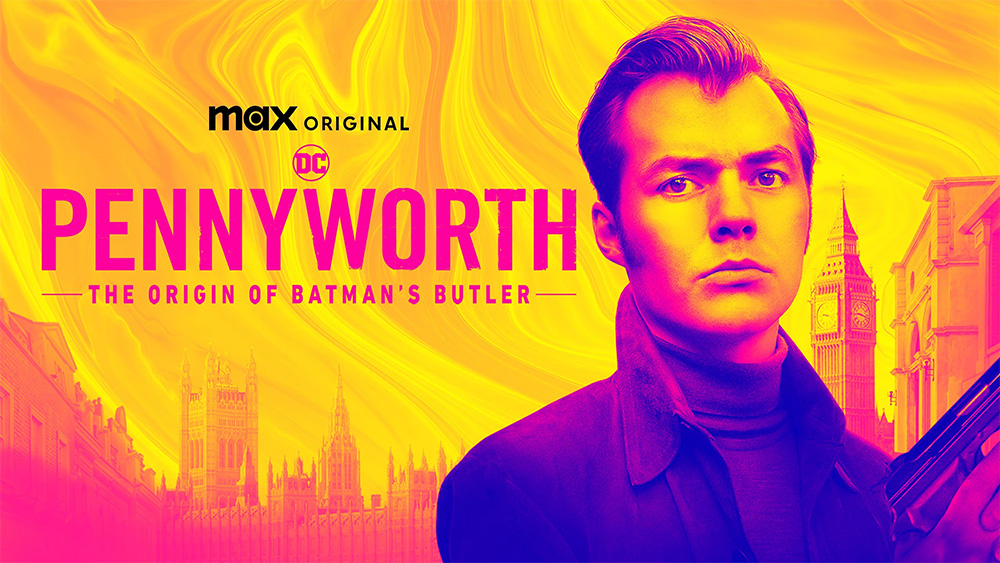
I don’t blame you if you missed it; I think about Alfred Pennyworth significantly more than the average person thinks about Batman, and the knowledge that this show existed and had a three-season run slid off my brain the second it was not actively in front of me. Even with the recommendation of Daniel Kibblesmith and Jen Ashley Wright, who came on Ajax when they were obsessed with the extremes of its first two seasons, I was always surprised to remember that it was in fact a real show that people made, that aired on a television network, Epix, that I had never heard of before and have not heard of since.
This may have been one of the problems with the show, but it also might explain some things. When nobody’s watching, you can get away with a whole lot.
Last week, I finally remembered it existed, and since I don’t really have anything better to do, I mainlined the entire 30-episode run in the span of a few days, and folks. Let me tell you. I kind of love it. Not because it’s good, mind, because that particular quality is debatable at best, although everyone in it actually does turn in a pretty great performance. I loved it because as someone who without exaggeration is top five dead or alive in terms of knowing things about Batman, this thing went so far off the rails that it landed on a completely different track.
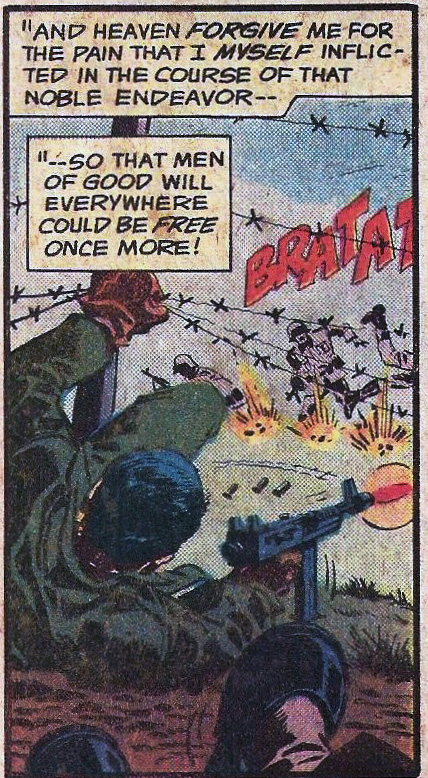
It was developed, as I understand it, as a prequel to Gotham, a show that I also didn’t watch because generally speaking, I care a lot less about things without Batman than things with Batman, especially if there’s the potential for Batman without the hope of him ever showing up. In fact, back when that show was first announced, I wrote a piece for ComicsAlliance about how if they really wanted to do a prequel show connected to the Batman mythos, they should really focus on Alfred, a character who has his own interesting backstory leading up to when he becomes the gentleman’s personal gentleman to the Batman. There’s a deep vein there to mine that existed long before the posh Wodehousian valet started leaning more into Michael Caine’s Cockney-accented mercen’ry who ‘unted down warlords in Burma. In fact, one of the very first comics I ever read, 1980’s Untold Legend of the Batman, included Alfred flashing back to his days in the SAS, liberating concentration camps and mowing down Nazis.
The process of going from a commando with aspirations of being a Shakespearean actor and ties to the British secret service would seem like an easy, endless source of inspiration, I said. The built-in character arc of someone who goes from being that kind of man of action to being a surrogate parent and support system for someone like Bruce Wayne could be fascinating, I said.
And somewhere, a monkey’s paw curled into a fist and Bruno Heller and Danny Cannon pitched Pennyworth: The Origin of Batman’s Butler.
Heller has mostly worked in television with Gotham and The Mentalist, but you may remember Cannon best as the director of Judge Dredd (1995, dir. Danny Cannon), and once you know that, then some things about Pennyworth start to get as close to making sense as anything about the show is ever going to. For all its considerable flaws, which mostly involve Rob Schneider, Judge Dredd ’95 was in many ways a whole lot more faithful to its source material than 2012’s Dredd, despite the latter being a pretty inarguably better movie. Karl Urban definitely plays a “truer” version of the title character than Sylvester Stallone, but Cannon’s Mega City One really does look like it fell right out of the pages of 2000 AD as a city where you can believe that just existing in it would cause you to succumb to Future Shock. It’s got the Cursed Earth and Mean Machine Angel and the fuckin’ ABC Warriors in it. Judge Dredd wears his real clothes and not a “realistic” tactical equivalent thereof. Say what you will, but Cannon was committed to capturing the over-the-top excesses of those comics.
And if there’s one thing that defines Pennyworth, it’s over-the-top excess. Even London itself is a strange, neon-lit, smoggy hybrid of the actual city and Anton Furst’s “hell burst through the pavement” design for Batman ’89’s Gotham City.

Another thing it has in common with Batman ’89 — and Riverdale, and what I’ve seen of Gotham — is that it’s very nebulously unstuck from time. It’s clearly based around the aesthetics of the early-to-mid ’60s, but beyond that, it’s almost to the level of Xena hanging out with Abraham, Isaac, David, Julius Caesar, and Jesus all in the span of two seasons.
It’s not just a matter of people having old-style cars but also cell phones, either; trying to figure out when this show took place sent me into a full red-string conspiracy board spiral. Why? I’m glad you asked!
Season 1, Episode 1: Alfred, at age 26, has recently finished ten years of service in the SAS, where he fought in “the war” against an enemy that’s referred to as “the Hun,” which of course was a slang term for Germans, but one that I’m pretty sure was primarily used in World War I. Later, it will be mentioned that World War II has happened, but also a TV broadcast in season 1 briefly mentions “the Reich” being in power in Germany. The right-wing fascists that try to take over England are also called “Nazis” by their enemies.
S1E3: Martha Kane, the future Martha Wayne, recruits Alfred to help her get a guy named Ian Thurso out of England before he can be imprisoned and castrated for being gay. Thurso, who also invented a computer, is clearly based on Alan Turing, who died in 1954.
S1E6: Alfred is sent to see “Baroness Orczy,” a psychic witch locked up in Bethlehem Royal Hospital. The real-life Baroness Emma Orczy, author of The Scarlet Pimpernel — an obvious influence on Batman as the first widely read piece of adventure fiction about a hero who uses his public persona as a wealthy dilettante to disguise his true identity as a highly skilled hero — died in 1927. She was also, to my knowledge, never incarcerated in Bedlam and was not a psychic witch who demanded that supplicants bring her the left hand of a murderer to have their fortunes told. Presumably, this could be another person using the name, but it’s never addressed.
Also, the person who sends Alfred to see her is John Ripper, a notorious knife murderer from Whitechapel. He’s never implied to be the more famous knife murderer from Whitechapel with that name, but, y’know. Worth mentioning.
S1E7: Martha — you know, Batman’s mom? — goes to a satanic orgy thrown by occultist Aliester Crowley. The real-life Crowley died in 1947. However, this Crowley uses the common mispronunciation — per Grant Morrison, who seems like someone who would know, Crowley’s last name rhymes with “holy,” not “foully.” There is a possibility, however remote, that there were two completely different British occultists named Aliester Crowley who were operating 20 years apart.
At said orgy, “Inna-Gadda-Da-Vida” is playing, and it’s definitely digetic. That song was released in 1968.
S1E9: Alfred’s father reads in the paper that “the American president announced his intention to put a man on the moon.” John F. Kennedy gave his famous “We go to the moon” speech on September 12, 1962, meaning that this episode would take place on September 13 of that year. However, the president is never named, and in Season 2, the president is referred to as a woman. There’s no indication of whether JFK’s assassination on November 22, 1963 happened, or if this is the same president, or anything.
S2EIforget: George Orwell is tortured to death for writing books critical of the right-wing fascist government that takes over most of England. Orwell, here in main-line continuity, died in 1950.
S3E8: After a five-year time jump following the end of the British Civil War (I’ll get to it), someone sings “I Will Survive” at karaoke. That song was released in 1978. Like “Inna-Gadda-Da-Vida,” this is definitely diegetic, unlike the two Amy Winehouse songs off Back to Black (“Back to Black” and “Love is a Losing Game,” respectively, both released in 2006) that were sung by characters in the show but that I’m willing to write off as poetic license.
And that’s just scratching the surface. Matters are further complicated by little bits and pieces of world-building dropped in here and there that raise the question of how alternate this alternate timeline is. There’s the line about the “Reich” above, for instance, but post-time-jump, there’s a brief mention by the Prime Minister that “we must all be vigilant that nuclear war never happens again,” and like… Yeah, technically nuclear bombs have been used during war here on Earth-Prime with the bombing of Hiroshima and Nagasaki in 1945, but that’s not usually what people mean when they say “nuclear war.” So what happened, there, Bruno? Danny? Help me out here, buds.
Even further complications arrive from the way that the show leans heavily into using some historical figures, like Crowley and Orwell, but conspicuously refuses to actually name others, specifically the Queen. Like, it’s absolutely Queen Elizabeth II, but she’s never actually named, and neither is Edward VIII, her “wretched uncle,” “the pretender” that the fascists want to install if Liz doesn’t capitulate to their demands.
By the way, while we’re on the subject of the Queen, she and Alfred definitely bang, and that, more than anything else, is astonishing that no one brought it up even once over the course of Gotham. I can believe that people wouldn’t bring up that there had been a full-ass nuclear war, but not that Alfred would never once mention that he got the ol’ orb-and-scepter with Lizzy Deuce. Also, I really love Jessica Ellerbee, who plays the Queen. I described everyone in this show — especially Jack Bannon, who stars as Alfred — as sounding like a Guy Ritchie character doing a mean impression of another Guy Ritchie character, but she’s the exception. She sounds like she’s playing Claire Foy in This Ain’t The Crown XXX, which is exactly what this part demands.
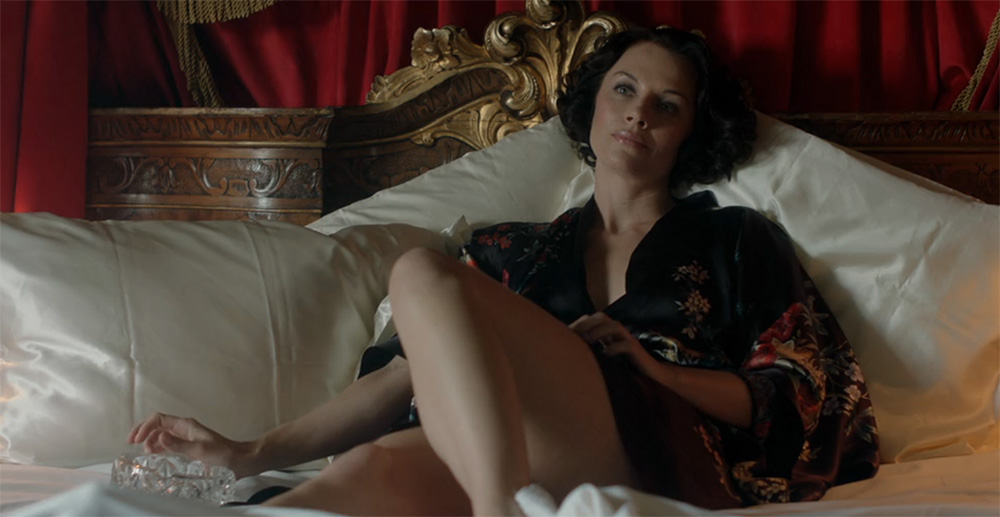
Shout out to a show bold enough to portray the Queen of England as a ravenous sex maniac who won’t stop calling Alfred’s mom tying to get him to come over and sort her out like an anaphasic candle ghost.
The reason the whole timeline thing sticks out to me is that it’s something that could’ve been avoided if they’d just thrown in more Batman stuff. I don’t necessarily think they wanted to — the anachronisms are certainly an intentional part of presenting the show as the kind of bizarre fever-dream fantasy that it actually is — but it would’ve allowed them to have the cake of being able to create their own alt-history Britain while dining on the existing fantasy story that they’re based on.
And yet, the show never does this. I’m all for introducing new characters rather than just throwing out a name that the real heads will recognize, and I certainly don’t want a situation like Smallville, a show where Clark Kent did everything you can think of including fighting Doomsday, dying, and coming back to life before he was ever actually Superman, and where they killed off Jimmy Olsen and had to introduce Jimmy Olsen’s cousin, Jimmy Olsen in the series finale to try and hammer continuity into any recognizable shape. I certainly don’t want young sexy Alfred to be running around fighting the Joker or anything — although, if we’re being honest, I would’ve popped like crazy if Jarvis Poker had shown up at some point. It just feels like they really did miss the opportunity to dig into some pretty rich lore. Instead, the only established characters that show up are Alfred, Thomas and Martha Wayne, and Lucius Fox. And, well, one more, but I’ll get to that in a second. Go ahead and start bracing yourself now.
Point being, they should’ve had someone on staff telling them about all the characters they could use, and by that I mean me. It is my most marketable skill, and I’ve done it professionally for a while now. I could’ve given them a stack of characters to slide right into this thing that would’ve helped it to feel connected even tangentially to the larger Batman mythos.
If you’re going to use an analogue to stand in for Alan Turing, then why can’t Aliester Crowley be Mangrove Pierce? Why isn’t Lord Ffogg showing up? Or Percival Shellldrake, the Earl of Wordenshire? Hell, why not just go all out and call the city itself “Londinium” like they did on Batman ’66? Because buddy, once you have a madman with a golden nose taking control of the army and conquering most of England while Alfred runs a club in a “neutral zone” for an homage to Casablanca so blatant that I — someone who has never seen Casablanca because there’s zero chance of Goku showing up in it — caught the reference, you’re not as far away from Adam West as people might think.

That’s not really a problem for me, though. Like I said, as a notable Xena liker, I have a high tolerance for this sort of thing. For all its anachronisms, Pennyworth still had a long way to go before it got on the level of that one episode of Jack of All Trades where Blackbeard (1680 – 1718) kidnaps Ben Franklin (1706 – 1790) in what is explicitly stated by the theme song to be the year 1801.
It does contribute to the surreality of the whole enterprise, though, which is underscored by the fact that none of the characters really have motivations. At all.
Alfred, for instance, starts the series having just gotten out of the SAS. He’s been traumatized by “the war” and the violence that he both witnessed and perpetrated, something that he’s been able to compartmentalize because he was trained to believe that as a soldier, he didn’t have a choice in what he did. “When my Sergeant Major gave me my first gun,” he tells obviously doomed love interest Esme in the pilot episode, “he said ‘This is not your gun. This is the Queen’s gun, and these are the Queen’s bullets.’ I was working for the Queen. Makes it all right, y’see?” Now, he’s no longer a soldier, and so he has vowed to never work for anyone else like that again, instead seeking a life where he’s the one in charge of what he does, never subsuming his own desires to anyone else’s allegedly righteous mission.
And that’s good stuff, right? We know where Alfred ends up, subsuming his own life for the sake of Batman’s mission, and how he comes to accept that there’s nothing wrong with pledging yourself to a higher cause, just as Bruce does. Finding out how that evolves, how that interconnects with his hatred of violence and the fact that he’s quite literally haunted by the ghosts of his past (or hallucinations thereof, which is close enough), is enough for a really compelling character arc.
That just never ends up happening.
There are times in the series where Alfred explicitly says that he’s learned that he should serve a higher cause, but much like all those times where Scrooge McDuck loses all his money, he’s right back to where he started with no real explanation in the next episode, working as what’s essentially a mercenary for anyone with enough money to hire him.
Also, he shoots so many people right in the face, so many times, often while doing other crimes. Like he blows one dude’s head clean off and we get a lingering shot of the remaining head stump like it’s a scene from Berserk. It happens a lot.
I don’t particularly mind this development, you understand, but you’d think it might change the dynamic between Alfred and his famously anti-gun-murder employer later on in life.
Along those lines, there aren’t ever any real consequences on the show, either. Most everyone who dies has to die at least twice before it sticks, and while our alternate Londinium is sketched out to be something of a grim dystopia where the enemies of the Queen are publicly hanged and disemboweled, the worst thing to happen to most people after committing capital crimes is a minor inconvenience.
At one point, Alfred shoots two people in the face in cold blood in front of a police detective.
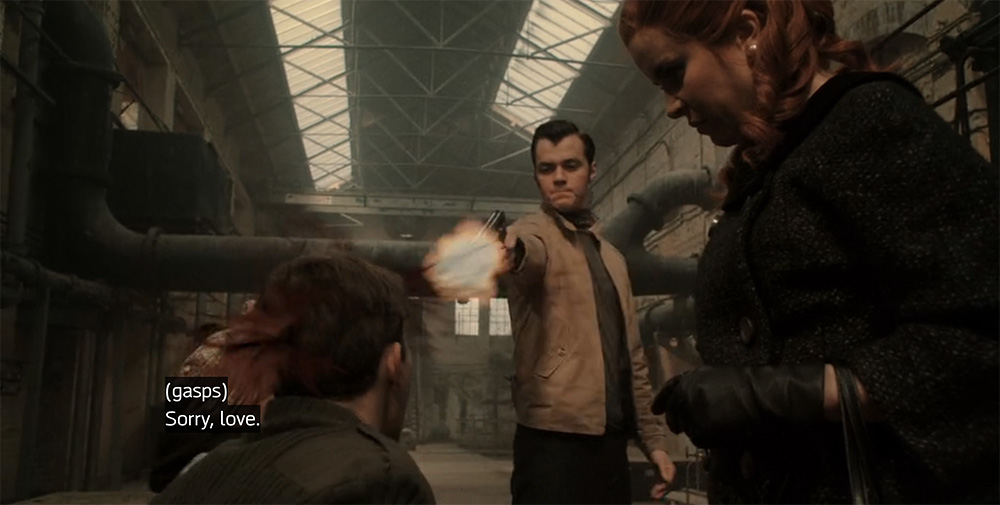
The next episode he goes to prison, which he promptly takes over offscreen. He is then released to go kill the guy with the gold nose, and winds up rescuing and railing the Queen to receive a full pardon. Total time served: 25 minutes, 42 seconds.
It’s not just the protagonist who gets away with murder, either. The driving plot of the first two seasons is the rise of a right-wing fascist group — described explicitly in those terms — called the Raven Union that manages to get the support of the vast majority of England’s armed forces, and at one point has taken over the entirety of the country with the exception of London itself. They’ve literally turned on the Queen in a violent rebellion, but once that whole conflict is resolved when Alfred deploys a zombie cyborg reanimated by chemical weapons (really), the general who was in charge of the rebel forces somehow manages to stick around in Her Majesty’s government like nothing ever happened. I’m sorry, but even in a show like this, a right-wing fascist criminal managing to hold onto any kind of authority or political power after participating in and leading a violent insurrection against the rightfully elected government with no consequences at all is just too unrealis—
Hm.
Right.
Let’s move on.
In the absence of motivation or consequences, the characters seem to be propelled forward by the people behind the camera asking what these characters would be the least likely to do based on what we know about them, and then taking the biggest swing possible to do that. It’s Vince Russo’s Attitude Era Crash TV approach of doing whatever you can to surprise the audience, and it makes the whole series feel like a fever dream. Thomas and Martha Wayne, for instance, have a shotgun marriage after she gets pregnant, but it’s not with Notable Only Child Bruce, it’s with a daughter they name Samantha who is never mentioned outside of this show. Like, this is nominally a prequel to Gotham, and is definitely meant to be a prequel to some version of the Batman mythos, but Batman having an English sister just never comes up.
This, by the way, is another place where they could’ve thrown in a deep cut by including Thomas Wayne Jr., Batman’s secret older brother who used to kill people with razor-sharp boomerangs, which would’ve been like the third or fourth weirdest element of the show. But I digress.
The whole show is full of swerves like that, including the one that, for me, is far and away the most egregious assault on Batman-as-mythology that I’ve seen since that scene in Batman Returns where Keaton cheerfully blows up that clown with a bundle of dynamite. Like, I can accept Thomas and Martha both being secret agents, I can accept Alfred’s dad being a cyborg, I can even roll with Samantha Wayne if you give me enough of a reason to, but you know what’s wild?
Bruce Wayne’s grandfather, Patrick Wayne? He’s also shot to death by a mugger in Crime Alley. The mugger is Thomas Wayne.

Thomas later confesses to this crime in a crowded Hyde Park, but again: no one ever brings this up. You’d think one person, just one person, would’ve commented on the irony in the pilot episode of Gotham, but no. We got a slow motion shot of Martha’s fake pearls hitting the pavement, but nobody ever said “hey, it’s kind of weird that this same thing happened to his dad, and also that he was the one who did it, right? Maybe we should get his kid into therapy.”
And again: zero consequences. Maybe there would have been if the show had gotten its fourth season — something they definitely expected since S3 ends with Downing Street getting nuked after the Rage Virus is unleashed during Alfred’s own shotgun wedding — but I doubt it. Instead, we just get what is, in context, the single funniest line of the entire series.

That’s also indicative of another weird characteristic of the show. With the exception of Martha, nobody on the show is, morally speaking, good. Alfred’s a mercenary who frequently kills in cold blood, Thomas is pretty weak-willed and morally grey even outside of the patricide that he commits purely for revenge, and the villains are, well, villains. Lucius Fox seems to have a conscience, but he also develops a deadly chemical weapon that almost wipes out the entire population of London — which, incidentally, is basically fear toxin, as though they did not already have a different guy whose entire deal is that he invents fear toxin and uses it to murder people — while working for the fascist insurrectionists. And the villains are, well, villains, even though they also tend to go back and forth in how they’re presented. In some cases, it works — I actually quite like Bet Sykes (Paloma Faith), who goes from kidnapping Alfred’s doomed girlfriend in the pilot to being an ally (with chemically introduced super-strength) by the end of the third season, after bouncing on every square in the alignment chart on the way. She’s the only one who seems driven by intense personal loyalty to the people she already likes, with zero concern for ideology. She also kills two people and steals their baby in that last season, but, y’know, pobody’s nerfect I guess.
I think the commitment to this truly nonsense level of moral grayness is supposed to be indicative of the world in which we find these characters, which, to tie things back into a point I made above, feels more like a swingin’ 60s Mega City One than it does like anything you’d see in the DC Universe. I mentioned above that it’s a dystopia, but like everything else on this show, it’s a weird one. There are public executions and the Beefeaters have machine guns and everything’s grey and depressing all the time — that last one might just be England, I dunno — and even the people opposed to the right-wing fascist Raven Union seem to be yearning for a vague concept of Better Times.
Even the right-wing fascists themselves are kind of vague. The show calls them right-wing fascists and Nazis, and they certainly dress the part once they organize and build their brutalist headquarters at Stonehenge in Season 2, but that kind of seems like the extent of it. We never find out what they want other than a vague promise to get rid of undesirables, but there’s no connection to what that ideology is in the real world. Racism doesn’t seem to exist in Pennyworth — the leadership of the fascists are all white people, but we see Black soldiers staffing their headquarters, which is very surreal given the imagery in play. Detective Inspector Aziz, who becomes Prime Minister in the second season, is played by Ramon Tikaram, a British actor of Fijan, Indonesian, and Malay heritage, and everyone’s pretty cool about that as well. Bet is a lesbian and seems pretty open about it and nobody has a problem with it, so things are seeming pretty progressive for 196X and a country on the verge of collapsing into a fascist dictatorship.
And that’s especially weird once it gives up on aiming for Gotham and instead becomes a prequel to V For Vendetta.
No, really.
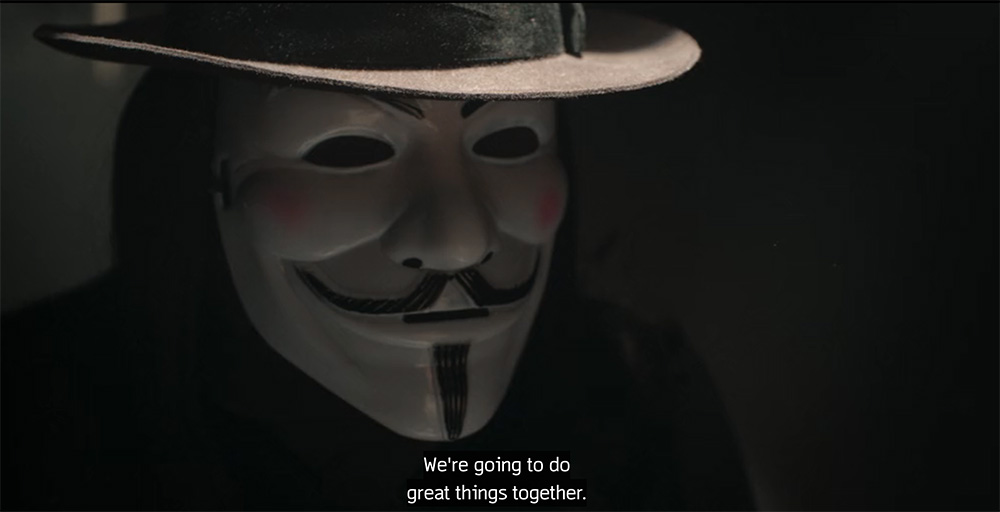
No. REALLY.
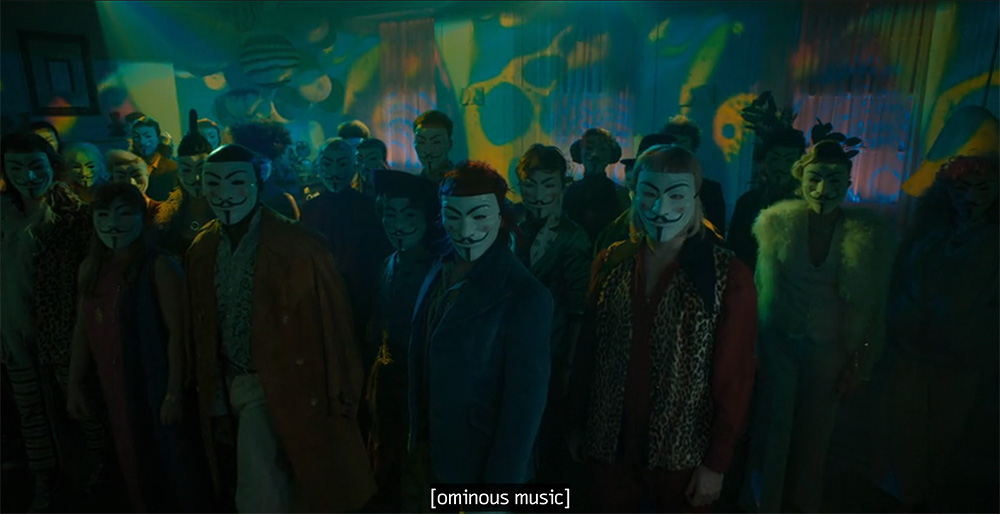
NO. HONEST TO GOD. THE ALFRED SHOW IS A PREQUEL TO V FOR VENDETTA.

I am both relieved and also kind of hate that I was not working in professional comics criticism when this happened. Believe me when I say that I fucking cackled when old boy leaned in with the mask on and said he was going to do great things. Friend, you already have.
Just to clear things up and so nobody’s disappointed when you take the thirty-hour fever dream that is watching Pennyworth, that’s not actually V, the guy from V For Vendetta. He’s actually a performance artist who doses the entirety of London with tainted milk containing… [heavy sigh] okay remember when I mentioned the Rage Virus earlier? It’s that; some weird CIA mind control drug that turns people into not-quite-zombies who just want to stab everyone else. Because at that point, sure, why not? The point is, everybody involved in this show was like “fuck it, let’s make a show about Alfred, Batman’s butler, that’s a prequel to the show we already did about Commissioner Gordon and also simultaneously to V For Vendetta, but not the comic, specifically the 2005 movie that was adapted by the Wachowskis,” and then that’s exactly what they did. Nobody stopped them. I don’t know if anyone could have stopped them.
And that’s the thing about this show. The actual, official, full title of the series is Pennyworth: The Origin of Batman’s Butler, and friend, that is a bald-faced fuckin’ lie. Over the course of thirty episodes where it seems like the people involved could do pretty much anything up to and including having Thomas Wayne gunmurder his own father in Crime Alley, it doesn’t take STEP ONE towards showing how Alfred Pennyworth becomes Batman’s butler. He meets Thomas Wayne, which I guess is kind of a nudge in that direction, but he certainly doesn’t do any buttling for him, and the Waynes never ask him if he’s interested. In fact, in one of the clearest examples of this show doing everything except what the larger Batman mythos demands that they do, when they actually hire a domestic employee, it’s ALFRED’S MOM. She becomes the nanny to their kid. You know, Samantha? Not Bruce? Who does not exist? Because this is actually a V For Vendetta The Movie (2005 Dir. James McTeague) prequel and not actually a Batman story?!
And you know what? Good.
I know how Alfred became Batman’s butler, and if you want to know for yourself, you can go find that story in comics. It’s already out there. I’ve read it. I know about it. What I didn’t know was how Alfred became a freelance cyborg hunter and Queen Elizabeth II’s go-to side piece, and my life has absolutely been enriched by that knowledge.
I do wish they’d explained why Jack Bannon has Alfred’s classic comics widow’s peak and Sean Pertwee has a hairline so straight you could use it paint a highway. I mean, come on, are we really supposed to believe that’s the same guy? Show some respect for canon.